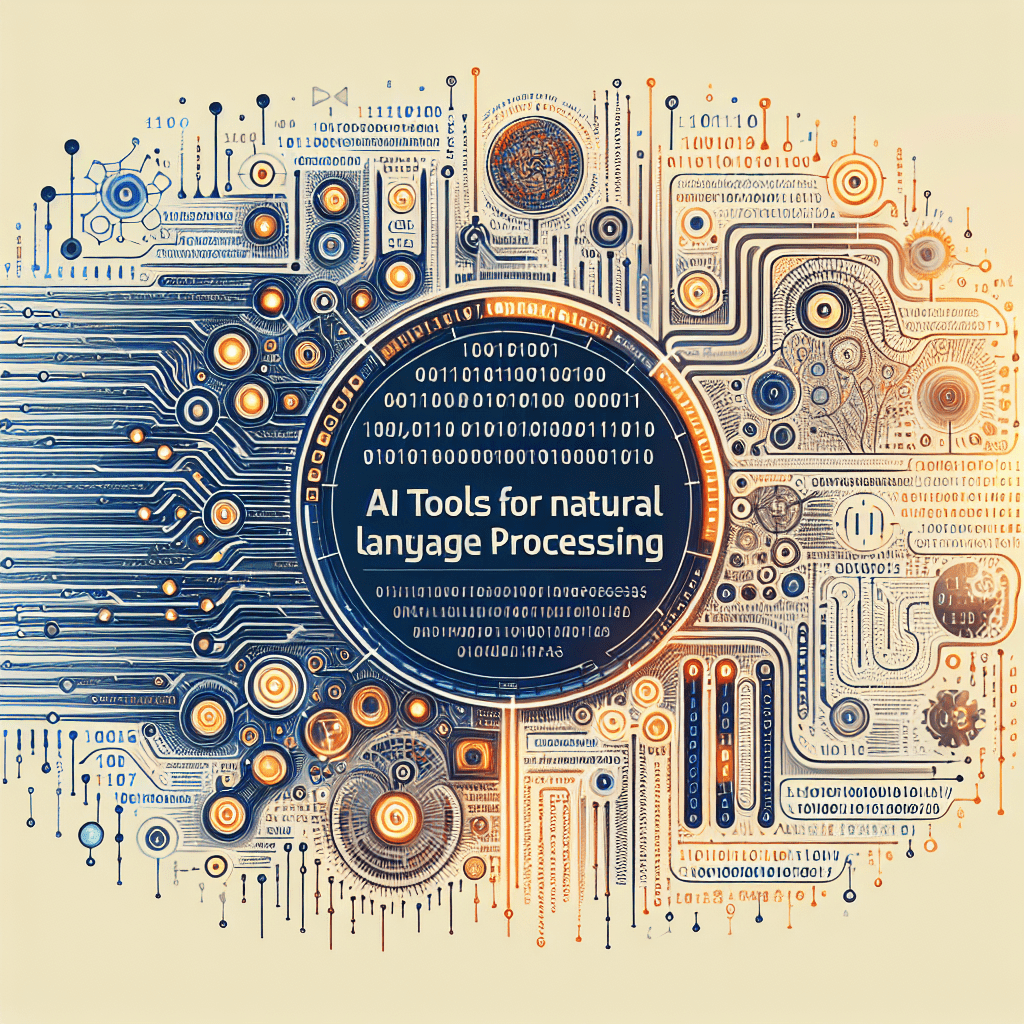
[ad_1]
In the vast and swiftly evolving landscape of technology, Natural Language Processing (NLP) stands as a crucial frontier in AI development. NLP enables machines to understand and interact with human languages, transforming vast amounts of text data into meaningful insights. Whether you’re a developer, business analyst, or researcher, leveraging top AI tools for NLP can greatly enhance your projects and workflows. Here, we explore the top 20 NLP tools available today, each renowned for their unique capabilities and contributions to the field.
1. Google Cloud Natural Language API
Google Cloud Natural Language API provides powerful pre-trained machine learning models that can analyze text and understand sentiment, entity analysis, syntax, and content classification. This tool is invaluable for developers who need to extract insights from customer feedback, social media conversations, and other text sources.
2. IBM Watson Natural Language Understanding
IBM Watson Natural Language Understanding is a cloud-native product that helps developers analyze text to extract metadata from content such as concepts, entities, keywords, categories, sentiment, emotion, and more. It’s particularly effective for enhancing customer engagement applications.
3. OpenAI’s GPT-3
The third iteration of the Generative Pre-trained Transformer by OpenAI, GPT-3, is one of the most advanced AI models for generating human-like text. It can create anything from articles to poetry, essentially simulating a high level of comprehension and contextual understanding.
4. Hugging Face Transformers
The Transformers library by Hugging Face is an open-source, community-driven project that offers access to many pre-trained NLP models. It supports over a hundred languages and is designed to be deeply interoperable between TensorFlow and PyTorch.
5. Amazon Comprehend
Amazon Comprehend uses machine learning to uncover insights and relationships in text. The service identifies the language, extracts key phrases, places, people, brands, or events, understands sentiment about products or services, and organizes a collection of text files by topic.
6. BERT (Bidirectional Encoder Representations from Transformers)
BERT revolutionized the way machines understand human language by focusing on the context surrounding words in a sentence rather than just the isolated content. Developed by Google, BERT has been open-sourced to the public, making it a popular choice among developers for a variety of NLP applications.
7. spaCy
One of the most popular open-source libraries for advanced NLP, spaCy is designed specifically for production use. It helps users build applications that can process and understand large volumes of text. It can be used to build information extraction or natural language understanding systems and offers tools for tokenization, POS tagging, NER, and more.
8. NLTK (Natural Language Toolkit)
The NLTK library is widely used for academic and research purposes. It provides easy-to-use interfaces along with a suite of text processing libraries for classification, tokenization, stemming, tagging, parsing, and semantic reasoning, making it a great tool for those just starting out in NLP.
9. Stanford NLP
Developed by one of the leading universities in AI, the Stanford NLP group offers a robust suite of language processing tools. It supports a number of core NLP tasks and provides grammatical analysis tools that are very useful in linguistic research.
10. Microsoft Azure Text Analytics
This service is part of the Azure Cognitive Services suite and helps users uncover insights such as sentiment analysis, key phrase extraction, named-entity recognition, and language detection from their text.
11. AllenNLP
Built on PyTorch, AllenNLP is an open-source library from the Allen Institute for AI. It’s designed for research in deep learning approaches to NLP and offers pre-trained models mainly focusing on semantic role labeling, textual entailment, and dependency parsing.
12. FastText
Developed by Facebook AI Research (FAIR), FastText is an open-source, free library designed to help build scalable solutions for text representation and classification. It’s known for its efficiency in categorizing large volumes of text and is particularly useful for language identification and word embeddings.
13. ProphetNet
A model introduced by Microsoft, ProphetNet surpasses traditional seq2seq models by introducing future n-gram prediction. This technique significantly boosts the model’s understanding and generation capabilities, making it a robust tool for summarization and translation tasks.
14. TextBlob
Simple to pick up for beginners, TextBlob extends the Python library NLTK and offers an easy-to-use interface to the common text processing tasks, enabling quick text analysis without the hassle of diving deeply into the technical details of underlying algorithms.
15. T5 (Text-To-Text Transfer Transformer)
Google’s T5 explores the ability of a model trained on a multi-task mixture of supervised and unsupervised tasks to perform a variety of NLP tasks. Its versatility and capacity to adapt to different tasks make it an ideal choice for many NLP applications.
16. Flair
An NLP library built on PyBtorch, Flair is designed with a focus on state-of-the-art NLP applications like named entity recognition (NER), part-of-speech tagging (POS), and sense disambiguation.
17. Apache OpenNLP
Part of the Apache Software Foundation, OpenNLP is a machine learning-based toolkit that supports common NLP tasks such as tokenization, sentence segmentation, part-of-speech tagging, named entity extraction, chunking, parsing, and coreference resolution.
18. MALLET
MALLET (Machine Learning for Language Toolkit) is a Java-based package for statistical natural language processing, document classification, clustering, topic modeling, information extraction, and other machine learning applications to text.
19. CoreNLP
Another offering from Stanford, CoreNLP provides a suite of core algorithms designed to facilitate very high-speed text processing, and is an integration of many Stanford’s NLP tools, including part-of-speech taggers, the named entity recognizer, the parser, the coreference resolution system, and sentiment analysis tools.
20. Octoparse
While primarily a web scraping tool, Octoparse also offers features that facilitate easy extraction of text data from websites, which can then be used for various NLP tasks. It provides a simple point-and-click interface that doesn’t require advanced programming skills.
Each of these tools reflects a unique aspect of the vast capabilities of AI in processing human language. Whether you are working on sentiment analysis, content categorization, or text generation, the right NLP tool can streamline your workflow and enhance your outputs, taking your applications to the next level.
[ad_2]







